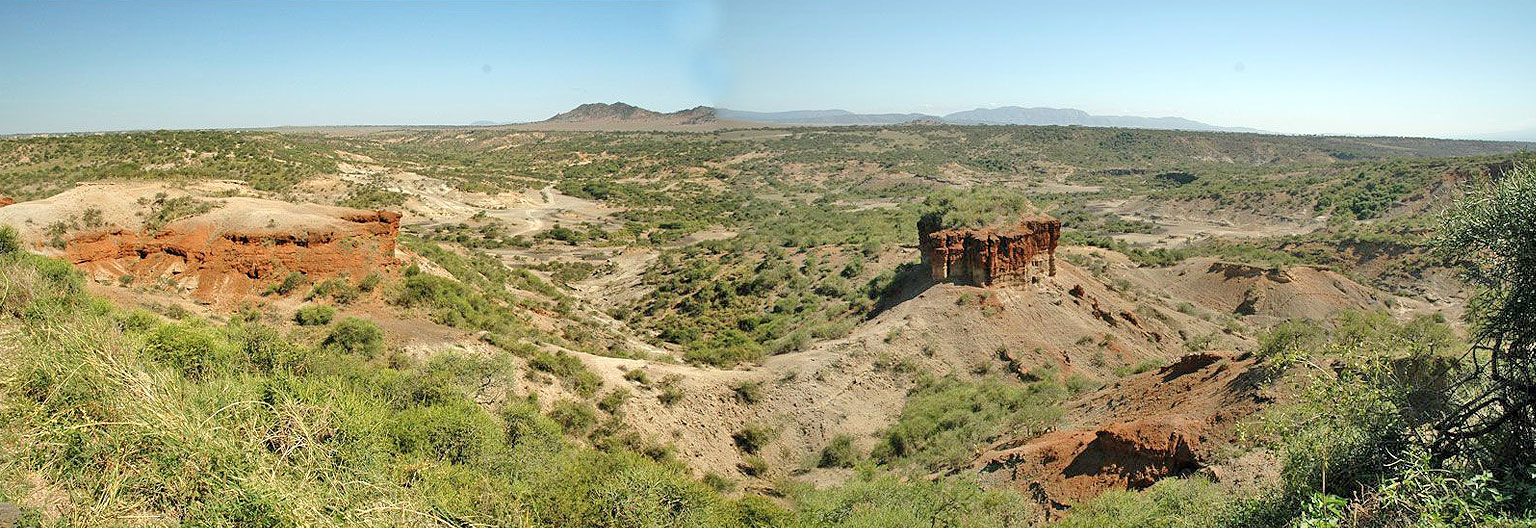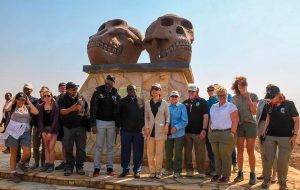
Tanzania is the home of the 40 kilometre-long Oldupai Gorge, the world famous palaeoanthropological site studied for more than 40 years by the Leakey family. Olduvai is a mispronunciation of Oldupai, the Masai word for a type of wild sisal found around the gorge. The Gorge was re-named in 2005 to correct this mistake.
It is located at the border of the Ngorongoro conservation area and the Serengeti National Park. Oldupai has yielded numerous fossil remains from pliocene to pleistocene times (from about five million to 10.000 years ago), including the skull of the primitive hominid australopithecus boisei or nutcracker man, a species that became extinct about one million years ago.
 Despite the controversy surrounding the interpretation of many of the Oldupai specimens, scientists agree that no other site has produced stone tools, animal bones and early hominid remains so precisely associated in such a well understood environment. The 3.75 million year old fossilised footprints, found by Dr. Mary Leakey in 1975 at nearby laetoli, proved that our prehuman ancestors walked in a upright position, this is widely thought to rank among the greatest palaeoanthropogical discoveries of the past century.
Despite the controversy surrounding the interpretation of many of the Oldupai specimens, scientists agree that no other site has produced stone tools, animal bones and early hominid remains so precisely associated in such a well understood environment. The 3.75 million year old fossilised footprints, found by Dr. Mary Leakey in 1975 at nearby laetoli, proved that our prehuman ancestors walked in a upright position, this is widely thought to rank among the greatest palaeoanthropogical discoveries of the past century.
There are also several other important mid-pleistocene sites in the southwest of Tanzania, while the later quaternary sites of ndutu, eyasi, and ngaloba, all located within reach of Tanzania’s Northern Circuit, have yielded significant fossil evidence for dating the evolution of homo sapiens. It was from this evidence that a group of American scientists recently concluded that anatomically modern humans actually evolved in East Africa.
